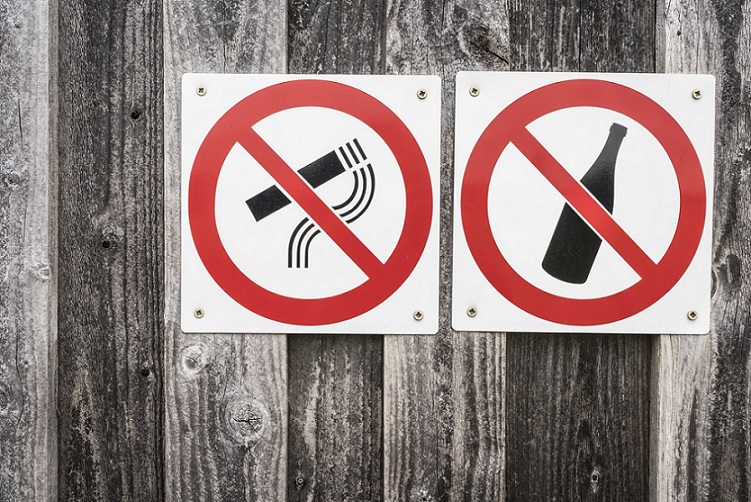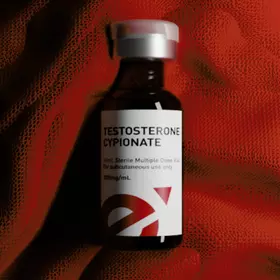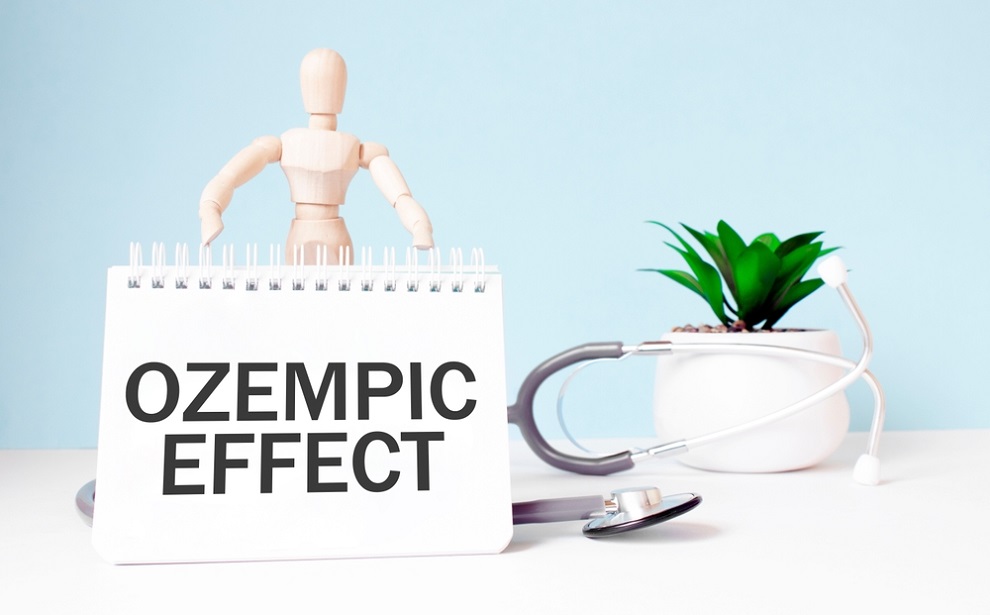Quick Summary
- Stroke risk goes up significantly after age 40. This is due to high blood pressure, unhealthy habits, and existing health problems.
- It's important to recognize stroke symptoms early. Use the F.A.S.T. method to identify signs like slurred speech, weakness, or changes in vision.
- While you can't change your age or genetics, you can reduce stroke risk by managing things you can control, like high cholesterol, smoking, obesity, and lack of exercise.
- Eating a diet low in saturated fats, limiting salt, and processed sugars to keep your heart and blood vessels healthy, which can prevent strokes.
- Exercise regularly and keep a healthy weight to lower blood pressure, improve circulation, and regulate blood sugar and cholesterol levels.
Are you aware that stroke ranks as the fifth leading cause of death in the United States and is a significant contributor to disability?
Once you reach the age of 40, the likelihood of experiencing a stroke rises due to factors such as hypertension and various lifestyle habits that often emerge as time goes on. This makes early awareness and proactive measures essential in reducing the risk.
The brain relies on continuous blood flow to function. When this flow is interrupted, brain cells can begin to die in minutes. Many strokes happen without warning. This blog educates readers on how to prevent a stroke as they grow older.

Types of Strokes and Their Warning Signs
A stroke is a medical emergency that occurs when the blood supply to a section of the brain is interrupted. Without the flow of oxygenated blood, brain cells start to deteriorate in just a few minutes.
The damage can lead to severe disability or death, depending on how quickly treatment is received. There are three main types of strokes. Each affects the brain differently and requires immediate medical attention.
- Hemorrhagic stroke happens when a blood vessel in the brain bursts, causing internal bleeding and pressure on brain tissue.
- Ischemic stroke is the most common type. It happens when a clot blocks an artery that provides blood to the brain.
- Transient ischemic attack (TIA), or mini-stroke, is a temporary blockage. Symptoms are similar to a full stroke but usually resolve within minutes to hours. However, a TIA is often a warning sign of a future, more serious stroke.
Knowing the warning symptoms can help save a life. Stroke symptoms often appear suddenly. They vary depending on which part of the brain is affected, but several common signs should never be ignored.
The most widely used method to identify stroke symptoms is the F.A.S.T. test:
- Face: Ask the person to smile. Does one side droop? That could signal weakness or paralysis.
- Arms: Ask them to raise both arms. If one arm drifts down, it may point to muscle weakness.
- Speech: Ask them to say something simple. Slurred or strange speech may be a sign of a stroke.
- Time: If any of these symptoms appear, call 911 immediately. Note the time symptoms began to help emergency teams respond effectively.
Other symptoms may include:
- Sudden confusion, memory loss, or difficulty understanding speech
- Trouble speaking or complete loss of speech (aphasia)
- Blurry vision, double vision, or sudden vision loss
- Dizziness, vertigo, or balance problems
- Severe headache with no known cause
- Loss of coordination, clumsiness, or difficulty walking
- Numbness or weakness on one side of the face or body
- Slurred or garbled speech (dysarthria)
- Fainting, seizures, or sudden loss of consciousness
- Sudden loss of senses like hearing, smell, or touch
Strokes can happen without warning or pain. That's why it's important not to delay medical care. Every minute counts. The faster a person receives treatment, the better the chance of reducing brain damage and improving recovery outcomes.
Stroke Risk Factors You Can and Can't Control
Stroke risk increases with several factors, but not all are within your control. Understanding both types helps guide smarter health decisions.
Non-Modifiable Risk Factors
You cannot change these factors, but knowing them helps you stay alert.
- Age: Risk rises significantly after age 40.
- Family History: If a close relative, such as a parent or sibling, has had a stroke, your risk may be higher.
- Sex: Men tend to have strokes earlier in life, though risk increases in both sexes with age.
- Genetics: Inherited health conditions like high blood pressure or cholesterol levels may increase the risk.
Modifiable Risk Factors
These are linked to your lifestyle or existing medical conditions and can often be improved with changes.
- High blood pressure: This is the leading cause of stroke and can often be managed with treatment.
- Smoking: The use of tobacco harms blood vessels and raises the likelihood of clot formation.
- Excessive alcohol use: Consuming too much alcohol raises blood pressure and the risk of stroke.
- Poor diet: High salt, sugar, and processed foods can lead to obesity, diabetes, and hypertension.
- Lack of exercise: Physical inactivity contributes to several stroke-related conditions.
- Diabetes and heart disease: These conditions raise stroke risk if not properly managed.
How to Reduce the Risk of Stroke
Not all strokes can be prevented, but lowering the odds is possible with the right approach. Below are some of the most effective ways to lower your risk of a stroke:
Manage High Blood Pressure and Cholesterol
High blood pressure quietly damages blood vessels, reducing their flexibility and narrowing their internal space over time.
The added pressure puts a strain on the heart, creating an environment where clots can form in narrow arteries, significantly raising the risk of cardiovascular problems. High cholesterol levels further complicate this by contributing to plaque buildup, which restricts blood flow and increases the risk of coronary artery disease.
Regular check-ups help find high blood pressure early. This way, you can change your medication or lifestyle on time. According to guidelines from the American Heart Association, blood pressure should ideally remain below 120/80 mmHg. Alongside medication, you must adopt changes in daily habits to improve your cholesterol level.
Make simple changes to help your blood vessels stay healthy. Start by eating less salt and being active every day. If you have extra health risks, your doctor might suggest taking medication to lower cholesterol.
Healthy Eating
Healthy food supports blood vessel health and helps regulate blood pressure, cholesterol, and weight. Incorporate whole grains, fresh vegetables, legumes, and low-fat dairy to build a strong foundation for stroke prevention.
Consume low-carb foods that promote better cholesterol levels, while potassium-rich items, such as leafy greens and bananas, help regulate blood pressure. It is also vital to limit saturated fats and avoid trans fats to lower your risk of plaque buildup in arteries.
Your alcohol intake should also be moderate, if at all, as excess drinking can raise blood pressure. You should limit your daily salt intake to no more than 2,300 mg. If you are at risk, aim for closer to 1,500 mg.
You can improve your eating habits without making significant changes. Even minor, consistent improvements can help you manage stroke-related health factors.
Maintain a Healthy Weight
Maintaining a healthy weight and staying active are two of the best things you can do to reduce your risk of stroke. These habits help keep your blood vessels in good shape, improve circulation, and take pressure off your heart.
Carrying too much weight, especially around your belly, increases the risk of developing high blood pressure and other problems that raise stroke risk. Long-term studies back this up. In one study of over 21,000 men followed for 12.5 years, those with a BMI of 30 or more were twice as likely to have a stroke as those who were lean. [1]
More recently, the SELECT trial offered encouraging findings. It followed more than 17,000 people with obesity and heart risk factors and found that those who lost weight using a medication called Semaglutide had fewer strokes, heart attacks, and heart-related deaths than those who didn't. [2]
Regular physical activity also makes a big difference. Simple steps like daily brisk walks can help control weight, keep away heart problems, and improve blood flow. Exercise also supports healthy testosterone levels, important for keeping your blood vessels working well.
Losing extra weight and staying active can go a long way in preventing stroke and keeping your heart and blood vessels healthy.

Quit Smoking and Limit Alcohol
Cigarette smoking significantly increases stroke risk due to its damaging effects on the cardiovascular system. It injures blood vessels, raises blood pressure, and lowers oxygen supply, all of which strain vascular health. As a result, the likelihood of stroke rises sharply.
In a longitudinal UK cohort study of over 7,300 men followed for 13 years, researchers found that current smokers had approximately 3.7 times the stroke risk of never-smokers. Former smokers had an intermediate risk, around 1.7 times higher than those who had never smoked.
However, the risk does not remain fixed. After quitting, the body begins to recover. Within five years, light smokers who had stopped saw their risk fall close to baseline, and even heavy smokers experienced notable improvements.
Compared to those who continued smoking, recent quitters had far lower risk, with relative risk estimates around 1.8 versus 4.3. Overall, smoking cessation reduces stroke risk by 50-60% within a few years. These findings underline a clear message: continuing to smoke dramatically increases stroke risk, but stopping, even after years of use, leads to meaningful and measurable health gains over time. [3]
Additionally, alcohol consumption also plays a role in stroke risk. While moderate drinking might not pose an immediate danger, excessive alcohol intake increases blood pressure, contributes to heart disease, and can promote stroke. Therefore, limiting alcohol intake reduces stroke risk and improves your heart health.
Control Diabetes and Blood Sugar Levels
High blood sugar levels and diabetes increase the risk of stroke. When blood sugar stays high, it can harm blood vessels and raise the chances of blood clots, which can lead to a stroke. Diabetics are more prone to developing heart disease.
Regularly check your blood sugar to manage your diabetes. Keep your blood sugar level in a healthy range to prevent damage over time. Many people need medications to control their blood sugar. Combined with healthy eating and exercise, these can lower the risk of stroke.
Eating a healthy diet is key for managing blood sugar. Focus on foods with fiber, lean proteins, whole grains, and healthy fats to keep sugar levels stable. Control portions and limit sugary foods to manage your diabetes.
If you have diabetes, managing your blood sugar is important to lower your stroke risk. Work with your doctor to create a plan that includes medication, healthy habits, and regular blood sugar checks. Stay on top of your diabetes to reduce stroke risk and improve your overall health.
How Testosterone Optimization Can Support Stroke Prevention
Low testosterone is linked to several stroke risk factors, including abdominal obesity, insulin resistance, high blood pressure, and poor cholesterol levels. When properly managed, testosterone therapy can help lower these risks and improve overall cardiovascular health.
At Male Excel, we treat low testosterone as more than a symptom issue. We see it as a contributing factor to long-term health decline. Research shows that men with low testosterone often carry excess belly fat, have poor insulin sensitivity, and struggle with energy and motivation. These are not just quality-of-life issues. They directly impact heart and blood vessel health.
Emerging evidence shows that testosterone therapy, when prescribed and monitored by qualified providers, does not increase the risk of stroke or heart attack. In many cases, it improves blood vessel function, reduces inflammation, and supports better metabolic control.
By restoring healthy testosterone levels, men can improve body composition, regulate blood pressure, and support healthier blood flow. These benefits work together to reduce stroke risk over time.
If you're over 40 and dealing with low energy, poor focus, or stubborn weight gain, it may be time to assess your hormone levels. Optimizing testosterone with the right support could help you feel better now and protect your health long into the future.
Address Issues Like Atrial Fibrillation and Sleep Apnea
Heart issues like atrial fibrillation (AF) and sleep apnea can increase stroke risk, yet they are often overlooked.
Atrial fibrillation, which causes an irregular heartbeat, raises the likelihood of blood clot formation in the heart. These clots move to the brain and cause a stroke. Similarly, sleep apnea, a condition where breathing pauses during sleep, puts strain on the heart and blood vessels, raising stroke risk.
Getting diagnosed and treated early helps manage these conditions and reduces the risk of stroke. For atrial fibrillation, treatment often involves medications to regulate the heart rhythm and prevent clot formation. Procedures like cardioversion or ablation may sometimes be needed to restore normal rhythm.
Sleep apnea is primarily managed using a CPAP device that maintains an open airway while a person sleeps. Make significant lifestyle changes, such as losing weight, avoiding alcohol, and sleeping on your side, to reduce sleep apnea symptoms and lower cardiovascular risk.
If you suspect you have atrial fibrillation or sleep apnea, it's important to consult your healthcare provider. A thorough evaluation and a personalized treatment plan can help prevent complications, including stroke.
Conclusion
Taking care of your heart and brain doesn't require an overnight overhaul. Small, steady changes lead to lasting results.
Eating better, staying active, managing your weight, and improving sleep can all lower your risk of stroke. So can addressing deeper medical issues like high blood pressure, diabetes, sleep apnea, and low testosterone. Each of these factors affects your circulation, energy, and long-term health.
At Male Excel, we believe prevention starts with knowing your numbers and understanding your symptoms. That includes checking your hormone levels and getting expert support to optimize them if needed.
Whether you want to feel more energetic, lose stubborn weight, or protect your heart and brain as you age, we're here to help. Our team provides personalized plans that combine hormone optimization with lifestyle guidance so you can take control of your health with confidence.
Take the first step today. Start your free assessment, speak with a provider, and get a plan built around you. The changes you make now could protect your health for decades to come.
References
1. Kurth, T., Gaziano, J. M., Berger, K., Kase, C. S., Rexrode, K. M., Cook, N. R., Buring, J. E., & Manson, J. E. (2002). Body mass index and the risk of stroke in men. Archives of Internal Medicine, 162(22), 2557. https://doi.org/10.1001/archinte.162.22.2557
2. Lincoff, A. M., Brown-Frandsen, K., Colhoun, H. M., Deanfield, J., Emerson, S. S., Esbjerg, S., Hardt-Lindberg, S., Hovingh, G. K., Kahn, S. E., Kushner, R. F., Lingvay, I., Oral, T. K., Michelsen, M. M., Plutzky, J., Tornøe, C. W., & Ryan, D. H. (2023). Semaglutide and Cardiovascular Outcomes in Obesity without Diabetes. New England Journal of Medicine, 389(24), 2221-2232. https://doi.org/10.1056/nejmoa2307563
3. Wannamethee, S. G. (1995). Smoking cessation and the risk of stroke in middle-aged men. JAMA, 274(2), 155. https://doi.org/10.1001/jama.1995.03530020073035

Get TRT Online
Optimize Your Hormones





